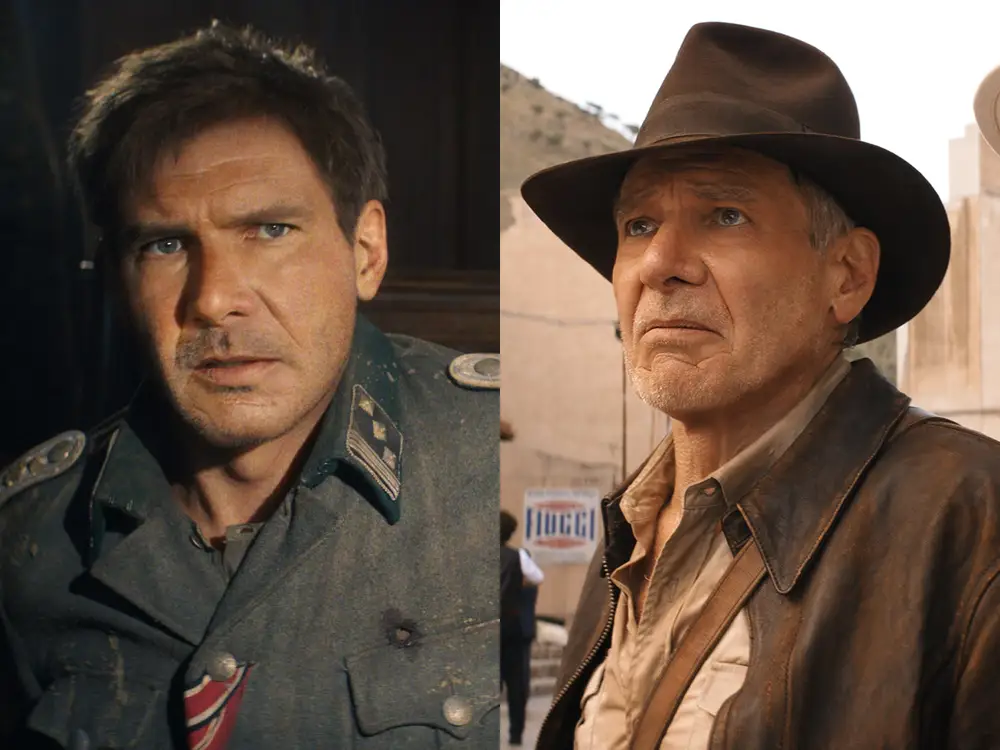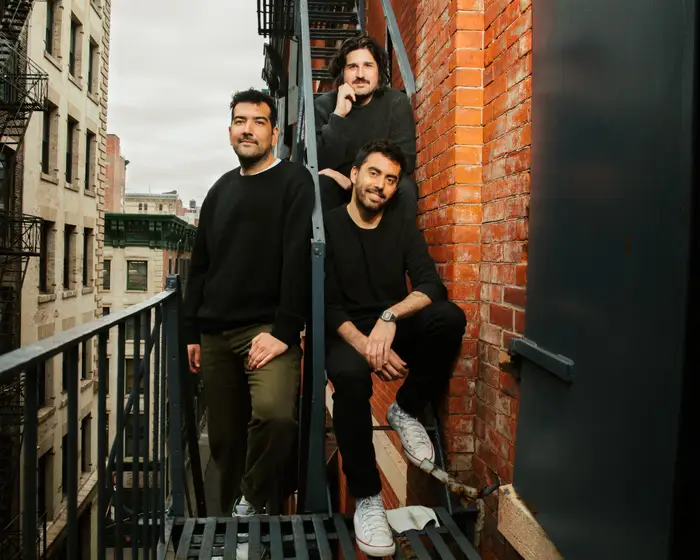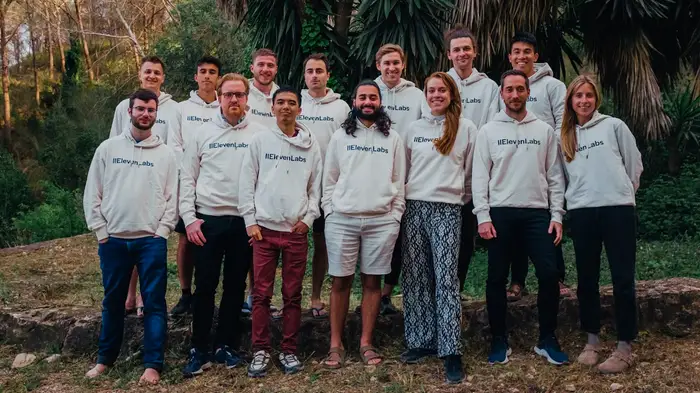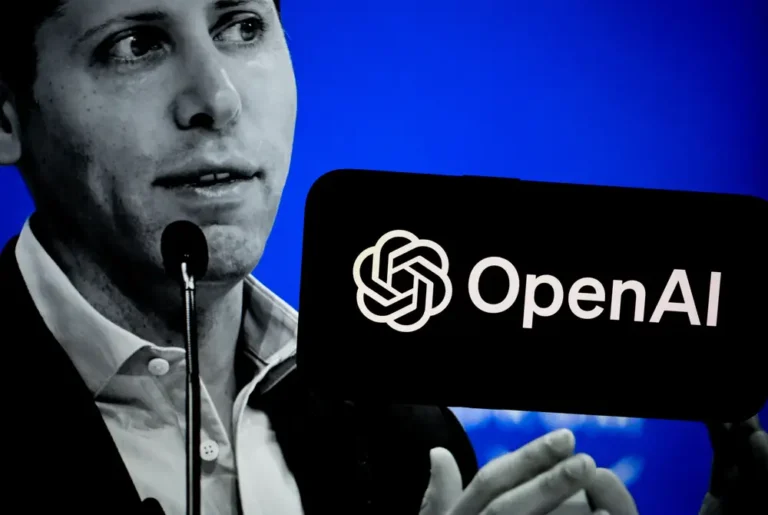Nvidia, Amazon, Microsoft, and Paramount execs discuss the use of AI in Hollywood. Here are 9 startups they’re watching.

Harrison Ford appeared as a younger version of Indiana Jones with the help of AI in “Indiana Jones and the Dial of Destiny.
Startups are rushing to create the best artificial intelligence video generation tools and convince Hollywood that AI won’t decimate the creative industries. But, the most common early use of AI in entertainment is often more mundane than reverse-aging Harrison Ford to simulate a younger Indiana Jones.
When top executives at the intersection of AI and entertainment met at the virtual Digital Hollywood summit on Monday, the use cases for AI in Hollywood were decidedly deeper in the details. They’re focused on marketing, speeding up back-office work, and generating more revenue from existing content.
AWS’s head of media, entertainment, games, and sports, Samira Panah Bakhtiar, said AI presents promising new ways to bring in more revenue from the back catalog of movies and shows that for many studios, largely sit idle.
“I think the most unbelievable opportunities presented at the moment to our customers who are sitting on decades and decades of archival content is their ability to search and discover what they’re sitting on,” said Bakhtiar.
AWS is working with other AI firms like Anthropic to find ways for media companies to categorize archival footage by characteristics like the lead actor and sentiment analysis so that the media owners may better understand what has untapped value to consumers.
Understanding where content can and should be distributed and then creating and translating subtitles, audio descriptions, or dubbing audio into a new language via AI are other applications entertainment execs are excited by. But for many powerhouses of creative content, building tools in-house is not in the cards. Enter the startups.
“We recognized early on, particularly in this generative AI wave, that the big foundation model technology companies are going to be very important to our future, and that we’re not going to be able to invest at a level to do things on our own,” Paramount Chief Technology Officer Phil Wiser said.
Not only can AI potentially help companies like Paramount more effectively distribute to audiences, but, it can also lower the cost of reaching audiences that may not be able to consume media as created.
Fulsome audio descriptions of scenes, for example, are expensive to execute well. “I’m hopeful that the use of AI can now make these accessibility capabilities more prevalent in media in general,” Wiser said.
Companies like Microsoft, AWS, and Nvidia are all eager to enable the next big breakout startup, and content developers like Paramount are prime customers for companies seeking to disrupt the way media is made and distributed. These are some of the startups AI and entertainment leaders have their eyes on.
Runway

Runway cofounders Alejandro Matamala-Ortiz, Anastasis Germanidis,and Cristóbal Valenzuela.
At its last round of funding, Runway had a $1.5 billion valuation, and its text-to-video capabilities have attracted partnerships from Paramount, AWS, Nvidia, and Google.
The focus of Monday’s discussion wasn’t on Runway’s potential to create films fully, but more to speed up work to market films made in the traditional way.
“Marketing is one of the areas we’re seeing great uptake because you have to create derivative versions of content very quickly, and you have to do it in the current workflow that you’re using,” Wiser said regarding how Paramount uses Runway’s technology.
The tech was also used in the Oscar-winning film “Everything Everywhere All at Once.”
Krikey.ai
Krikey also enables users to turn text into images, but it specializes in animation — for example allowing gamers to create three-dimensional avatars of themselves. This kind of technology makes way for some of the more prominent applications of AI within marketing and advertising.
“We’re seeing a lot of interest in marketing with this digital human or digital character equivalent that lets fans interact with the characters,” Wiser said. Krikey is in AWS’ Startup accelerator cohort, according to Pitchbook.
Cuebric AI
Cuebric can turn still images into multi-dimensional landscapes suitable for film. The company partners with Nvidia and AWS for its inference computing. Amazon’s Bakhtar called out Cuebric among several other startups using AI to create visuals. The company’s cofounders have said they want to democratize filmmaking.
Luma AI

Luma AI investor Marc Andreessen thinks AI can save comedy.
Luma AI, another image generation AI startup Bakhtar named, has raised more than $68 million according to Bain, with recent backing from Andreessen Horowitz. Luma’s text-to-3D image generation model Genie, is the company’s core offering. Cofounder and CEO Amit Jain worked on Apple Vision Pro and its machine learning applications before cofounding Luma.
xMentium
Microsoft’s business and technology strategist for media and entertainment, Eliot Sakhartov, described xMentium as a “thoroughly unsexy” AI tool his team is using.
xMentium helps speed up drafting and referencing legal documents and contracts. The company has raised around $7 million in funding, according to Pitchbook, and specifically targets the entertainment industry.
Speechmatics
Michael Kaplan, Nvidia’s global business development head for generative AI in media and entertainment, referenced Speechmatics, a UK-based startup that creates AI transcription and translation tools that can be used for captioning.
Speechmatics is a member of Nvidia’s Inception program, a network of more than 20,000 startups.
“You actually can unlock a whole bunch of content in a geography that typically would never have gotten that,” said Sakhartov of AI transcription and translation for captions.
Twelve Labs

More ads are likely coming to your streaming service
Twelve Labs, also mentioned by Nvidia’s Kaplan, uses AI to not only listen to spoken language in content but also understand what’s going on more broadly. This extra context can facilitate seamless sectioning of content into chapters or inserting ads in logical places. It also allows for more capabilities to search through videos by more ephemeral search terms like tone and actions.
Sakhartov presented a hypothetical scenario in which such a tool could take your favorite show and the length of your commute, and custom-edit an episode only with your favorite parts tailored to that window of time.
ElevenLabs

Voice-cloning startup ElevenLabs could extend the distribution opportunities for films and TV into new languages via AI dubbing. The London and New York-based startup reached unicorn status earlier this year. Its digital replicas of voices have also been used for marketing.
A digital version of Nvidia CEO Jensen Huang debuted at Computex 2024 in Taiwan in June and the tech titan’s voice was generated in both English and Mandarin by ElevenLabs.
Hour One

The Reid Hoffman on the left was created by Hour One’s AI. On the right is the real Reid Hoffman.
Speaking of Huang, Israeli startup Hour One’s technology helped animate Huang’s “digital human.” The rendering was so convincing, Kaplan admitted, “I did not know. I thought it was him.”
Founded in 2019, Hour One has been pushing the potential for digital humans and realistic avatars for longer than most. The company is also a member of Nvidia’s Inception program. Among entertainment applications, the company sees an opportunity to generate moving avatars of well-known broadcasters for real-time updates in news and sports.






